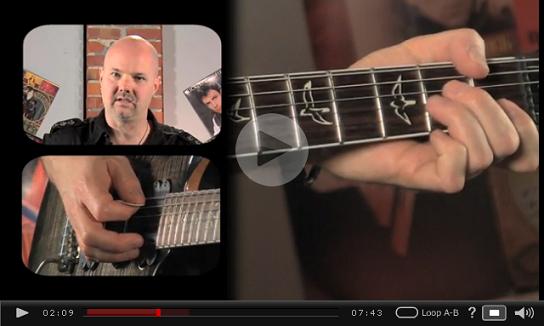Home
> Metal
> Chords
Dyads are two notes played together, whereas chords consist of three or more notes. Dyads (such as power chords) tend to be favoured by heavy metal guitarists as they provide more definition and clarity under high gain/distortion.
However, we will look at some ways in which you can use fuller sounding chords that sound good under distortion. Musicians often refer to dyads as chords anyway, especially when used in a rhythm (non-lead) context.
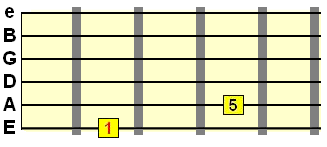
A common variation on this is to flatten the 5th, giving us a more dissonant diminished 5th interval...
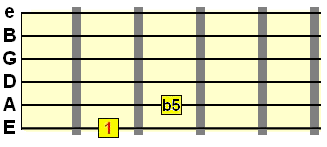
Or sharpen the 5th, giving us an augmented 5th interval...
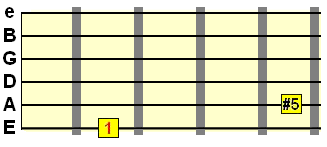
Remember, just like the regular power chord shape, these can also be used on A string and D string roots. Simple!
Then we have the major and minor metal guitar chords, still only using two strings, so we omit the 5th...
Major dyad
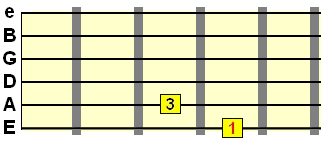
Minor dyad
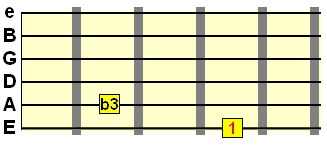
So, just by moving that upper string around the root, we can create chords that will allow us to give our metal more melodic intricacy. A simple example (I'm sure you can come up with something better than this!)...

And don't forget to try using open strings with these dyad forms. For example...
Try also experimenting with different dyad positions in drop tuning, as you can apply wider intervals due to the dropped 6th string.
This video looks at how you can use some of these diad forms in the context of metal songwriting...
Obviously it would be silly to limit the chords you can play to just "metal chords", but here are some chord forms that I've commonly come across in metal music. Remember, most of these shapes can be formed from both a low E root note and an A string root note, just like the regular powerchord shape...
6th chord (no 3rd)
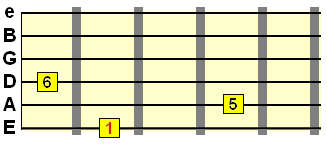
9th chord (no 3rd)
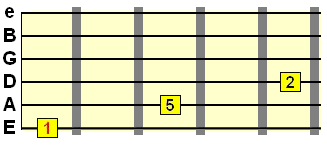
Major 7th chord (no 3rd)
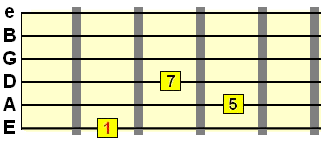
Minor 7th chord (no 3rd)
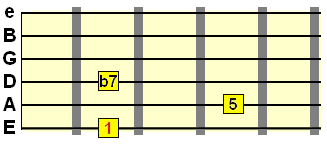
Suspended 4th chord
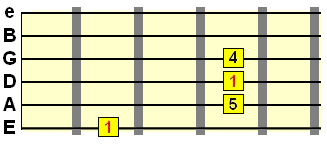
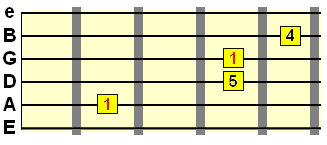
Suspended 2nd chord
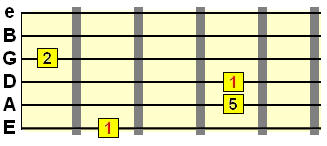
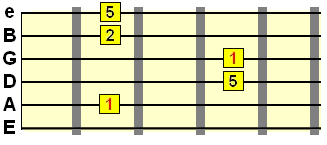
Try creating your own 3 and 4 string chords. The great thing about metal is that there is less emphasis on what sounds "right or wrong" than with other styles.
Learn More Guitar Chords
Use Metal Guitar Chords with these Techniques
Heavy Metal Guitar Chords
When doing keyword research for this site, a popular search term I discovered was "metal guitar chords". Because of the nature of metal music, guitarists most commonly use dyads as opposed to chords.Dyads are two notes played together, whereas chords consist of three or more notes. Dyads (such as power chords) tend to be favoured by heavy metal guitarists as they provide more definition and clarity under high gain/distortion.
 Free chord
cheat sheet Free chord
cheat sheetLearn how guitar chords work together in any key... Click here to start now |
However, we will look at some ways in which you can use fuller sounding chords that sound good under distortion. Musicians often refer to dyads as chords anyway, especially when used in a rhythm (non-lead) context.
Metal guitar chords as power chord alternatives
The power chord is the most commonly used dyad form in metal without a doubt. It involves the root and 5th intervals and is considered neutral because it lacks the 3rd of major and minor triads or any real tension. This interval is known as a perfect 5th...
A common variation on this is to flatten the 5th, giving us a more dissonant diminished 5th interval...

Or sharpen the 5th, giving us an augmented 5th interval...

Remember, just like the regular power chord shape, these can also be used on A string and D string roots. Simple!
Then we have the major and minor metal guitar chords, still only using two strings, so we omit the 5th...
Major dyad

Minor dyad

So, just by moving that upper string around the root, we can create chords that will allow us to give our metal more melodic intricacy. A simple example (I'm sure you can come up with something better than this!)...

And don't forget to try using open strings with these dyad forms. For example...
Try also experimenting with different dyad positions in drop tuning, as you can apply wider intervals due to the dropped 6th string.
This video looks at how you can use some of these diad forms in the context of metal songwriting...
3 and 4 string metal guitar chords
If your guitar has good quality pickups (i.e. not too muddy, good separation of chord tones), it should be able to ring out more than two strings under high gain/distortion without sounding like mush.Obviously it would be silly to limit the chords you can play to just "metal chords", but here are some chord forms that I've commonly come across in metal music. Remember, most of these shapes can be formed from both a low E root note and an A string root note, just like the regular powerchord shape...
6th chord (no 3rd)

9th chord (no 3rd)

Major 7th chord (no 3rd)

Minor 7th chord (no 3rd)

Suspended 4th chord


Suspended 2nd chord


Keep cutting chords down for metal
The only thing that makes these "metal guitar chords" is that we've cut down the fuller barre/movable forms to 2, 3 and 4 string chords more appropriate when using high gain and distortion.Try creating your own 3 and 4 string chords. The great thing about metal is that there is less emphasis on what sounds "right or wrong" than with other styles.
| |
Tweet |
Stay updated and learn more
Sign up to the newsletter for updates and grab your free Uncommon Chords book
Sign up to the newsletter for updates and grab your free Uncommon Chords book
Related
Learn More Guitar Chords
Use Metal Guitar Chords with these Techniques






